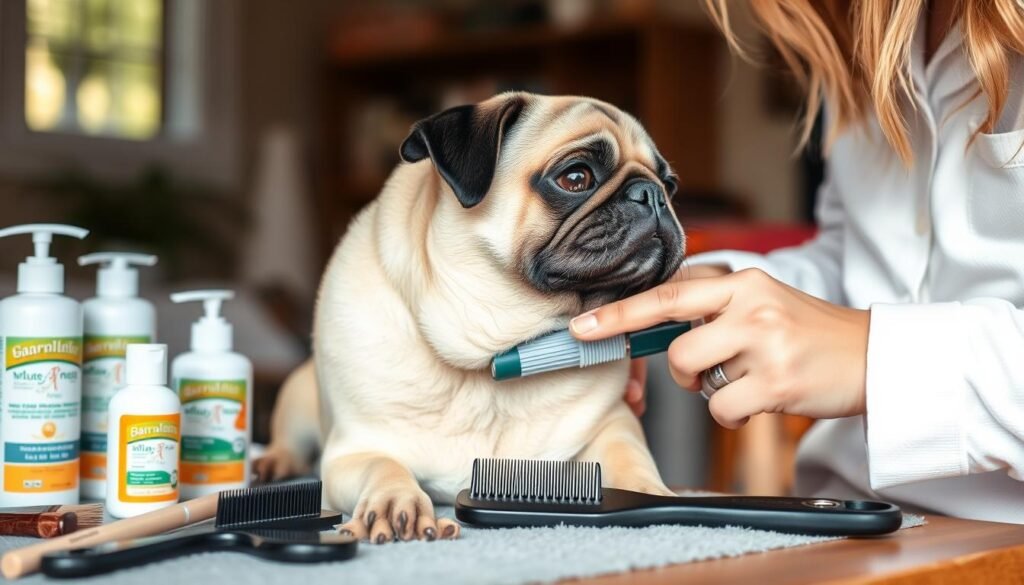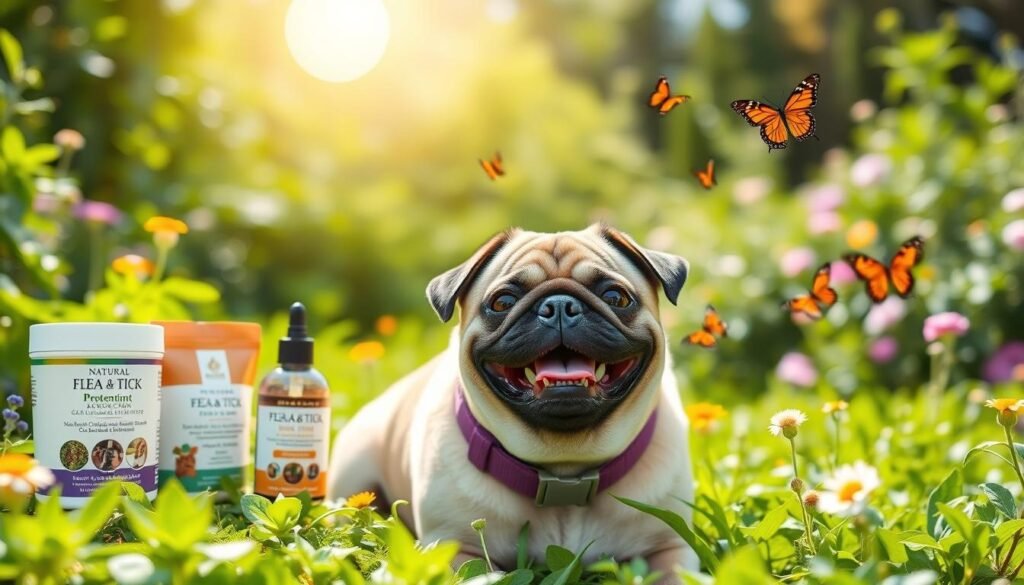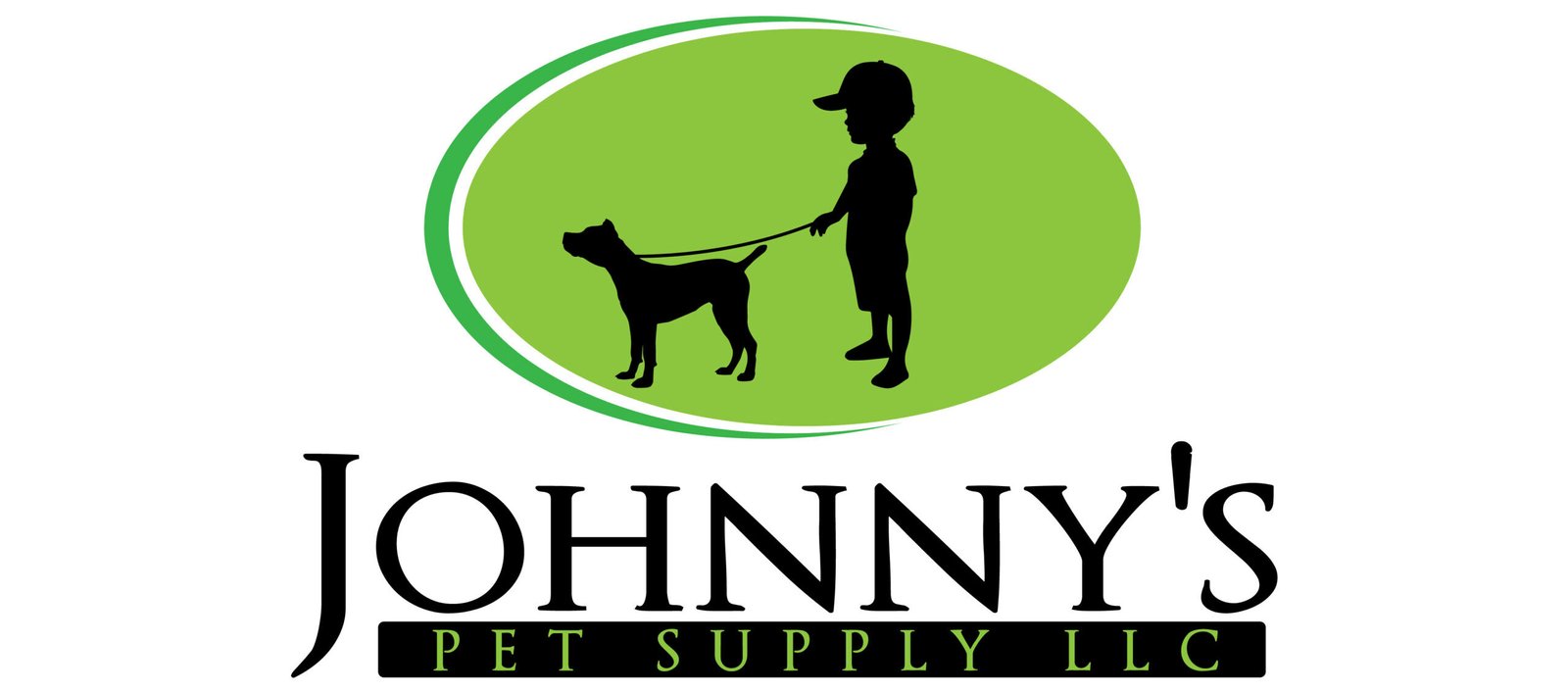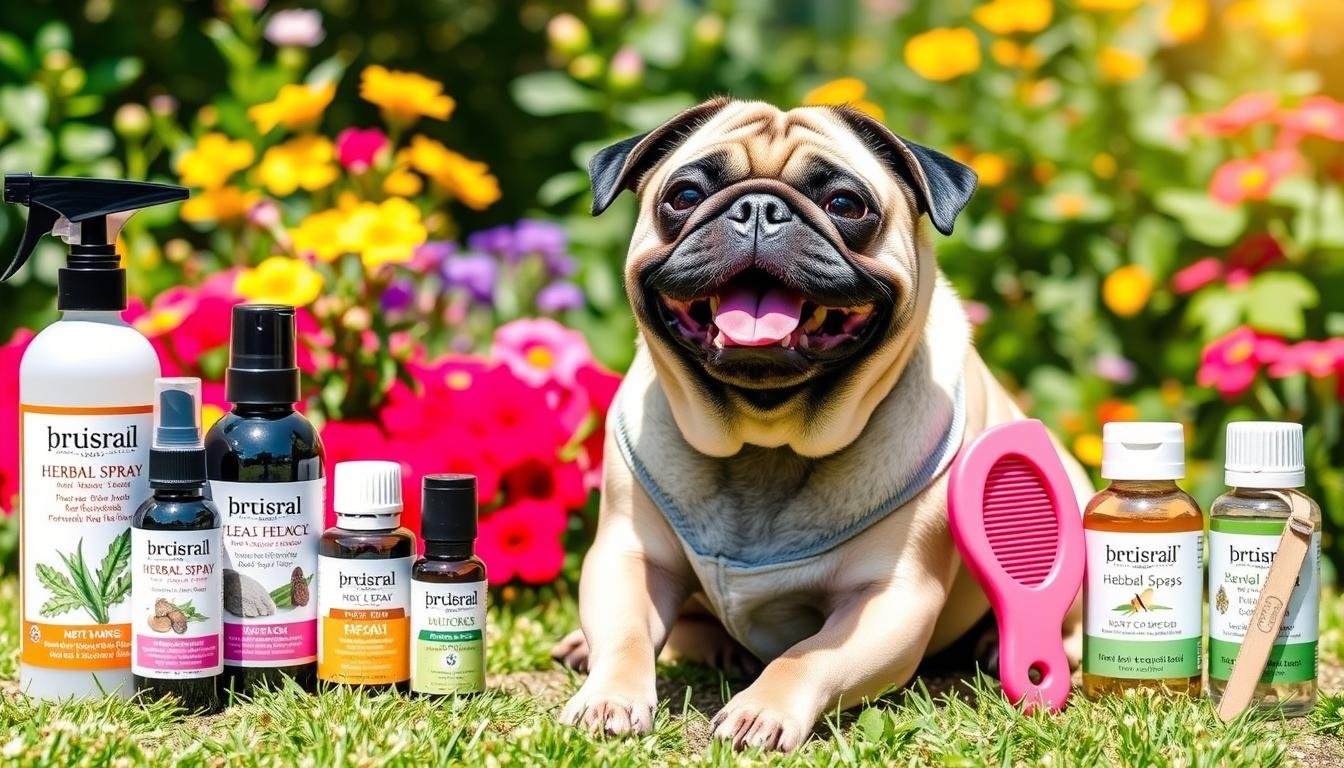How to avoid flea and tick infestations in Pugs
Spring and summer are the worst times for Pug owners. These seasons bring a lot of fleas and ticks. Climate changes make these seasons longer, making prevention even more important.
Fleas and ticks can cause many health problems for Pugs. These include skin issues and diseases. It’s vital to act fast and prevent these pests.
This guide will help you keep your Pug safe from fleas and ticks. You’ll learn about the dangers and how to spot them. Plus, you’ll find the best ways to prevent these pests.
Understanding Flea and Tick Infestations in Pugs
Risks and Health Concerns
Fleas and ticks are big threats to your Pug’s health. Fleas can cause skin irritation and allergic reactions. They can also spread tapeworms.
Ticks can carry diseases like Lyme disease and Rocky Mountain spotted fever. These diseases can be very dangerous.
Fleas love warm, humid places, so they’re a problem all year in many areas. They can grow fast, especially in good conditions. Ticks are also a big worry, found everywhere in the U.S.
Signs of Infestation
It’s important to know the signs of flea and tick problems. Look for a lot of scratching and seeing fleas or ticks on your Pug. Also, check for flea dirt, which looks like dried blood.
If you don’t treat these problems, they can cause serious health issues. This includes skin problems and diseases. It’s key to act fast to keep your Pug healthy.
“Just one flea on a pet can cause pain, itching, allergic reactions, and trauma.”
Grooming and Inspection Practices

Keeping up with grooming and checking your Pug for fleas and ticks is key. Pug grooming for flea and tick prevention is crucial for your pet’s health and happiness.
Regular Brushing and Combing
Brush your Pug often to get rid of loose hair and parasites. This simple step helps find and remove signs of fleas and ticks on Pugs. It also makes it easier to check Pugs for fleas and ticks.
Checking for Fleas, Ticks, and Flea Dirt
Examine your Pug’s skin, especially the belly, legs, and ears. Fleas and ticks like to hide here. Look for signs like live parasites, flea dirt, and tick attachments. Remove any pests you find right away.
By following these grooming and inspection tips, you can keep your Pug safe from flea and tick infestations in Pugs. This ensures they stay healthy and happy.
“Regular grooming and inspection are the cornerstones of maintaining a flea and tick-free Pug. It’s essential to be proactive and vigilant in order to catch any issues early on.”
Effective Flea and Tick Prevention Methods

To keep your Pug safe from fleas and ticks, you need to act early. There are many ways to prevent these pests.
Topical treatments and oral medications are popular choices. They kill and repel fleas and ticks. Flea and tick collars can also help, but they might not work as well.
Talk to your vet before picking a product. They know what’s best for your Pug based on their needs and where you live. Some products work better against certain pests.
Prevention is key all year round. Fleas and ticks can be active in any weather. Using the right products can protect your Pug from serious health problems.
While most flea and tick preventatives are safe, they can cause side effects. Always read the label and follow the instructions. This keeps your Pug safe and comfortable.
Natural remedies can also help. Essential oils like lavender and lemongrass can repel fleas and ticks. A vinegar, water, and baby shampoo bath can also help.
Combining different prevention methods keeps your Pug safe. With the right approach, you can enjoy a pest-free life with your Pug.
How to avoid flea and tick infestations in Pugs
Topical Treatments and Oral Medications
Keeping Pugs safe from fleas and ticks needs a few steps. Topical treatments and oral meds are great for fighting these pests. Topical products, like those with fipronil or imidacloprid, kill fleas and ticks right away. Oral meds, like isoxazoline or spinosad, work when the pests bite.
Choosing the Right Preventative Product
When picking a preventative for your Pug, think about their lifestyle and where you live. Also, consider any health issues they might have. Talk to your vet to find the best Pug flea and tick prevention products. They can help you choose the right Pug flea and tick treatment for your dog’s health.
The EPA says one in seven dogs have fleas. A single flea can lay up to 2,000 eggs in just two days. Fleas can live up to a year in their cocoon stage. So, it’s important to act fast to prevent fleas and ticks on Pugs.
“Veterinarians suggest that for every six fleas found on a dog, about 300 more fleas could be present in the home.”
To keep your Pug safe, use vet-approved treatments or meds. Work with your vet to pick the best option for your Pug. This way, your Pug will stay happy, healthy, and flea-free.
Yard and Home Care for Prevention
Keeping your Pug safe from fleas and ticks isn’t just about treating them. It’s also about making their environment safe. Start by taking care of your yard. Cut the grass short, clear leaf litter, and trim bushes to get rid of hiding spots for fleas and ticks.
Using pet-safe treatments in your yard can also help. This method can reduce the flea and tick population. It’s a smart way to protect your Pug’s outdoor space.
Cleaning and Vacuuming Routines
Inside, regular cleaning and vacuuming are crucial. Vacuum and clean your Pug’s bedding and favorite spots. This removes eggs, larvae, and adult fleas and ticks. It’s a key step in preventing infestations.
“Maintaining a clean and well-groomed environment is essential for effective Pug flea and tick prevention.”
By taking care of your yard, using environmental treatments, and cleaning regularly, you can make a safe space for your Pug. This approach helps keep your pet happy and healthy.
Removing Ticks and Fleas from Your Pug
Even with the best prevention, your Pug might still get ticks or fleas. Don’t worry, there are safe ways to remove them. You can get your Pug back to being happy and healthy.
Safe Tick Removal Techniques
If you find a tick on your Pug, use tweezers to grab it close to the skin. Pull it straight out without twisting. This way, you avoid leaving parts behind. Then, throw the tick away to stop more from coming.
To get rid of fleas, use a flea comb on your Pug’s coat. This will remove fleas and their eggs. Make sure to throw away any fleas and dried blood to stop the problem.
“Effective tick and flea removal is crucial for your Pug’s health and comfort.”
Stay calm and patient when removing ticks and fleas. Your Pug might not like it, but a gentle touch and persistence work. You can remove ticks and fleas from your Pug successfully.
Treating Infestations in Your Home
If your Pug has fleas or ticks, you must treat your home too. Fleas and ticks can spread fast in your home. They can harm your Pug and even you. It’s important to get rid of them in your home and on your pet.
Begin by vacuuming all carpets, furniture, and places your Pug likes. Make sure to throw away the vacuum bag or contents outside. Then, wash your Pug’s bedding and any soft items they’ve touched in hot, soapy water. This will kill any fleas or ticks left in your home.
- Vacuum all carpets, upholstered furniture, and other areas where your Pug spends time.
- Wash your Pug’s bedding and any soft furnishings in hot, soapy water.
You might also need to use a pet-safe insecticide or “fogger” in your home. These products have ingredients like pyrethrin, pyrethroids, or insect growth regulators. They can kill adult pests and stop more from coming.
“Consistency is key when it comes to treating Pug flea and tick home infestations. You’ll need to repeat the cleaning and treatment process several times to ensure that all stages of the flea or tick life cycle are eliminated.”
Remember, treating how to treat Pug’s home for fleas and ticks is crucial. By cleaning your home and treating your pet, you’ll keep your home and pet flea- and tick-free.
Seeking Professional Advice and Support
Preventing and managing flea and tick infestations in Pugs can be challenging. It’s wise to get advice from your vet. They can give you tailored advice based on your Pug’s needs and the local parasites. They can also help if the infestation is severe.
Vets who know Pugs well can give you great tips. They can help pick the best flea and tick products. They’ll also check if they’re working well. Plus, they can treat any illnesses caused by fleas or ticks.
Getting professional help can save you a lot of trouble. A good vet who knows Pugs can make a big difference. They’ll help keep your Pug happy and healthy, free from fleas and ticks.

